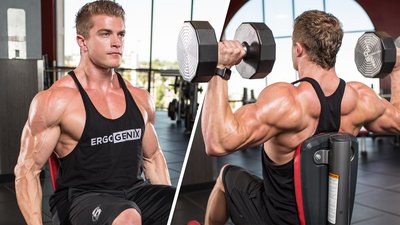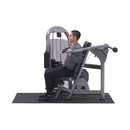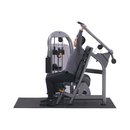Some people will tell you to focus the majority of your energy on your weakest spots. It's the classic "cut the bottoms off your pants to show the world your calves" mindset. Don't tell that to Tom Graff. This up-and-coming NPC physique competitor and Ergogenix athlete readily admits that his shoulders are his best body part, but he continues to train them as intensely as if they were his worst.
Still, his reasoning is hard to argue with. He points out that exaggerated delt musculature better emphasizes a tight midsection and even creates better separation in the upper arms. In short, the shoulders do more to define the shape of your upper body than pretty much any other muscle group.
Graff has a unique high-volume, high-frequency approach that will work for anyone looking to add width and definition to their caps, not just competitors preparing for the stage.
Here are the principles that he and his trainer Dylan Payne find especially effective when training shoulders, along with a workout to help you put them into action.
1. Train Delts With Greater Frequency
Graff's training split means his delts are worked not once but twice over the course of seven days. "So far, that's not too much stimulus," he says. "The extra emphasis has helped them grow like never before."
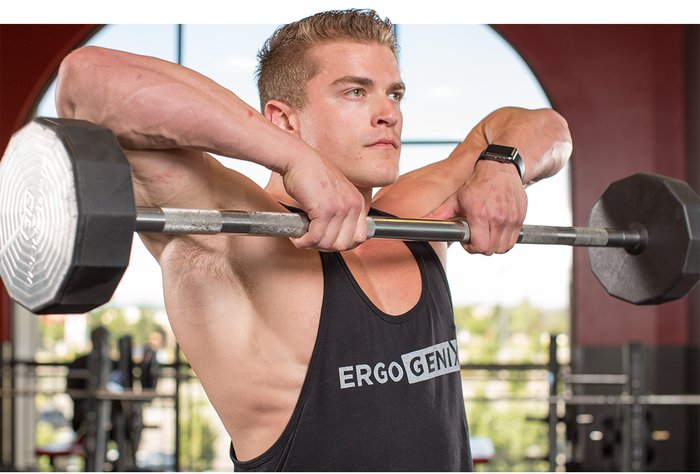
Aside from this direct attention, his individual delt heads are engaged in other workouts, too. The posterior head is highly engaged on back day during rows, and the anterior head is recruited in chest presses, especially on the incline bench. That's not a problem for Graff, who even puts chest, shoulder, and back workouts on successive days.
"I can't argue with the results," he says, countering the idea you must rest 48 hours before hitting a muscle group again. "Still, you can't neglect recovery factors, so pay particular attention to eating frequent, high-protein, balanced meals and getting sufficient rest."
2. On Heavy Presses, Choose Machines Over Free Weights
This may seem counter to how most trainers construct a workout. Graff says the biggest drawback with free weights is that increased instability often means backing off on the poundage. For him, it's all about pushing the maximal loads that allow him to reach the target rep.
"I favor machines when doing presses, because I can use more weight," he says. "Because I don't have to expend energy balancing the bar, my focus instead is just on pushing as much weight as possible without having to guide it."
3. Keep Volume High Throughout the Workout
What noticeably stands out about Graff's shoulder routine is the amount of volume; even his heavy sets are 12 reps. While exercise scientists commonly define the ideal rep range for hypertrophy as 8-12, Graff prefers to stay on the upper end.
"I typically keep my reps in the 12-15 range," he says. "I've tried doing fewer than 12, but often, when I get to 8 reps with a movement, it just doesn't feel like it's enough. I'll sacrifice a little bit of weight to reach that higher rep target. I get better blood flow and achieve a better pump, and I feel a lot more sore afterward."
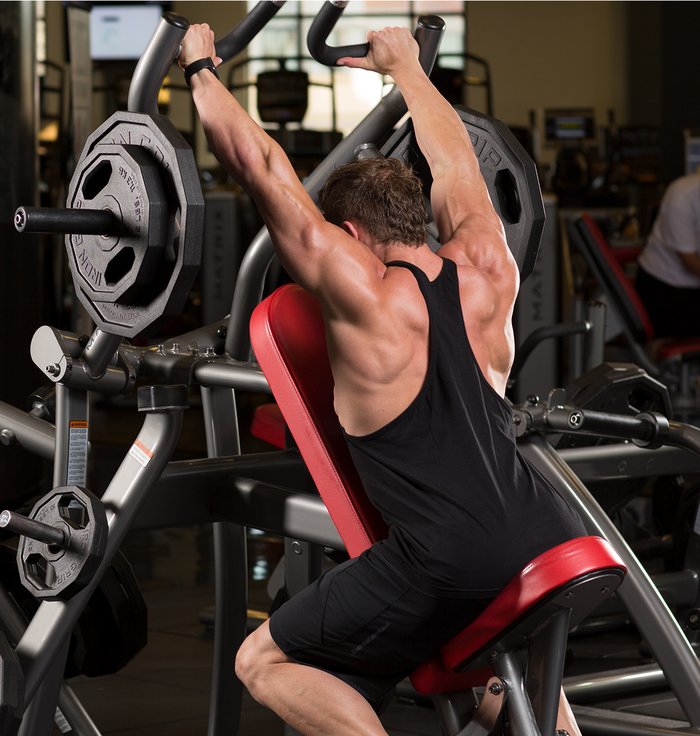
4. Watch the Mirror to See What's Working
Think that the mirror's only role in a weight room is to practice posing—or showing off? Far from it. For Graff, it serves a functional role when he's looking for proof that his training style is working.
"I can see the striations during my training, and that gives me great feedback about what's working," he says. "Seeing those striations pop up as I train gives me a good indication that an exercise is doing its job. That's also how I know that taking lateral and front raises overhead are still effectively forcing the muscle to train through a longer range of motion."
5. When Volume Is High, Take Fewer Sets to Failure
Graff's high-volume, high-frequency approach necessitates a dialing back in his drive. "I like to go just short of failure on most sets, then take only the last set as far as I can, sometimes pushing a few reps above and beyond my target rep," he says. "If I took more sets to failure I think it would likely increase cortisol release, which is a catabolic hormone."
In fact, the only post-failure technique Graff includes in his shoulder training is heavy partials. He focuses on just the middle of the range of motion, using an even heavier load than he can move for full-range reps.
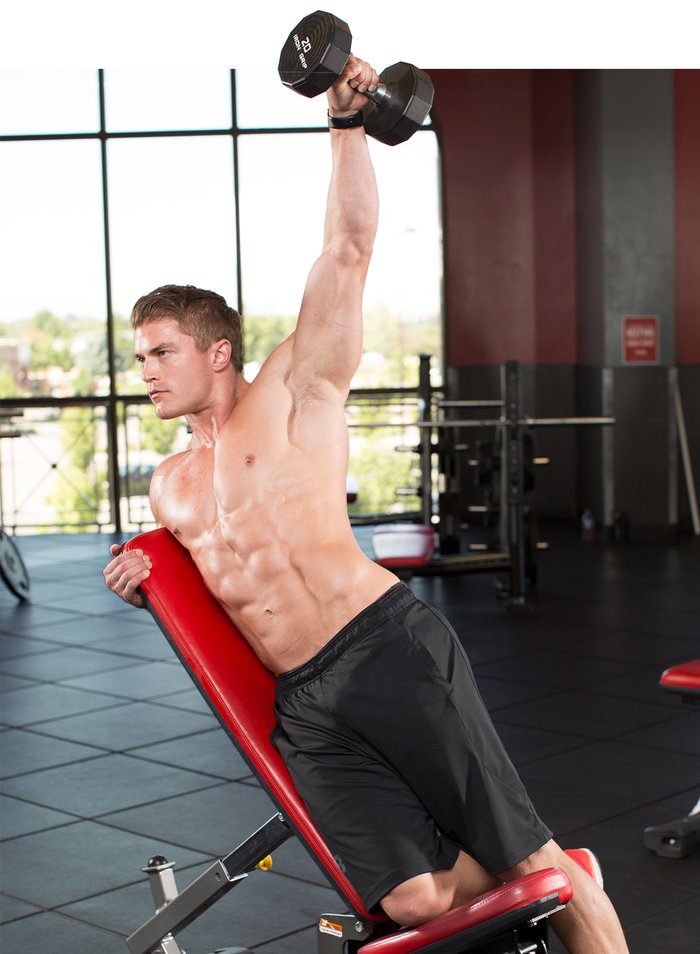
6. Add Extra Work for Weaknesses
It may be true that delts are Graff's best body part, but he concedes that isn't true of each of the delt heads. His front delts are overly developed, he says, perhaps from all the chest work he does.
"My rear delts are a relative weakness, so I may add an extra exercise for them or do more volume," he says. "Since having bigger shoulders gives you the illusion of being a bigger bodybuilder, I especially focus my shoulder-day training on middle delts."
Tom Graff's Shoulder Workout
Tom Graff begins his delt workout with some light-weight warm-up sets as well as internal and external rotation exercises for the shoulder joint and musculature. Rest 60-90 seconds between all exercises. Use a load that barely allows you to reach the target rep. Warm-up sets aren't listed here.

BodyFit
$6.99/month- 2,500+ expert-created single workouts
- 3,500+ how-to exercise videos
- Detailed workout instruction
- Step-by-step workout tips
- Training at gym or at home
- Access to Workout Plans
- Access to Bodyfit App
- Store Discounts
Already have a Bodybuilding.com account with BodyFit? Sign In

What comes with BodyFit?

- Instructional Videos
Don't risk doing a workout improperly! Avoid injury and keep your form in check with in-depth instructional videos.

- How-to Images
View our enormous library of workout photos and see exactly how each exercise should be done before you give it a shot.

- Step-by-Step Instructions
Quickly read through our step-by-step directions to ensure you're doing each workout correctly the first time, every time.
Tom Graff's Technique Keys
Leverage shoulder press: "Facing the apparatus instead of facing outward allows me to sink more into the machine, requiring my hands to go more behind my head. This puts more emphasis on the rear and middle delts while de-emphasizing the fronts, which for me are already strong."
Barbell upright row: "I keep my elbows as high as possible. Often, individuals begin losing the range of motion on successive reps. For me, that full ROM is what helps me build my upper traps, too. I really like to overemphasize keeping my elbows high, because I'll really feel it in my traps. In fact, that's about the only movement I do for upper traps. My preference is for a narrower hand position, which targets the anterior delts just a bit more than when the hands are placed further out."
Front incline dumbbell raise: "I've built much better striations in the front heads by doing this movement on a slightly inclined bench and taking the motion all the way overhead, which increases the range of motion. A lot of times, I can see in the mirror that the striations are pulling, and they become more pronounced as I extend the range of motion. I consider this my go-to front-delt exercise."
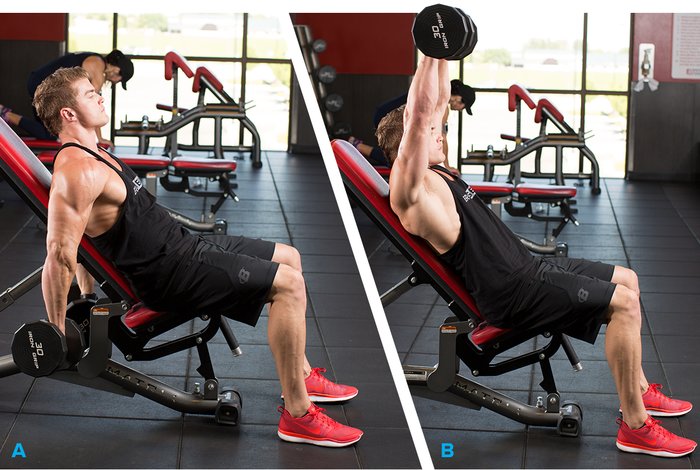
Front Incline Dumbbell Raise
Dumbbell lateral raise: "Visually, I don't just want my shoulders bigger; I want them to go out laterally, which helps create that separation with the upper arm. I do this one to about shoulder height. Alternately, I might do a middle-delt variation in which I'm leaning on my side on an incline bench, taking the dumbbell all the way overhead for a longer range of motion."
Single-arm plank with dumbbell reverse fly: "This is a two-fer in that it hits both my core and rear delts. Basically, I have to stabilize my torso with a single-arm plank and then complete a single-arm reverse fly. I start with a neutral grip, and as I bring my hand out in a wide arc, I turn my thumb so it faces down. I feel a stronger contraction in my rear delt than if my hand stayed in the same neutral position throughout the rep."
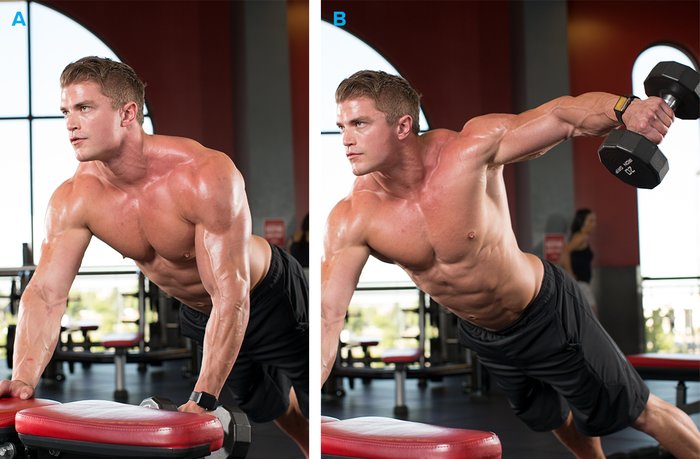
Single-Arm Plank With Dumbbell Reverse Fly
"Graffic" Changes
Graff's workout is one that has worked for him, but don't believe it's the last workout he—or you—will ever need. "Like most bodybuilders, I believe in incorporating changes frequently in my workouts," he says. "I like to mix it up by making exercise substitutions to keep my delts from adapting to given movement patterns. While there are some exercises I do just about every workout, there are others I like to change up more frequently."
When he is in the offseason and looks to add size to his shoulders, he makes additional concessions to keep growing. "For one, I'm not doing any cardio at all, and I slow down my workouts, keeping my heart rate below 120," he says. "I also have to force myself to eat even when I don't want to, which is even harder when you're following a 'clean' bulk. It requires a lot of food preparation, which I do for about two hours each Sunday. That's so much food that I have two Costco multipack meal containers filled, enough for about a week."
You want to make big-time shoulder gains? That's the kind of effort it takes. Commit to growth, and make it happen.


